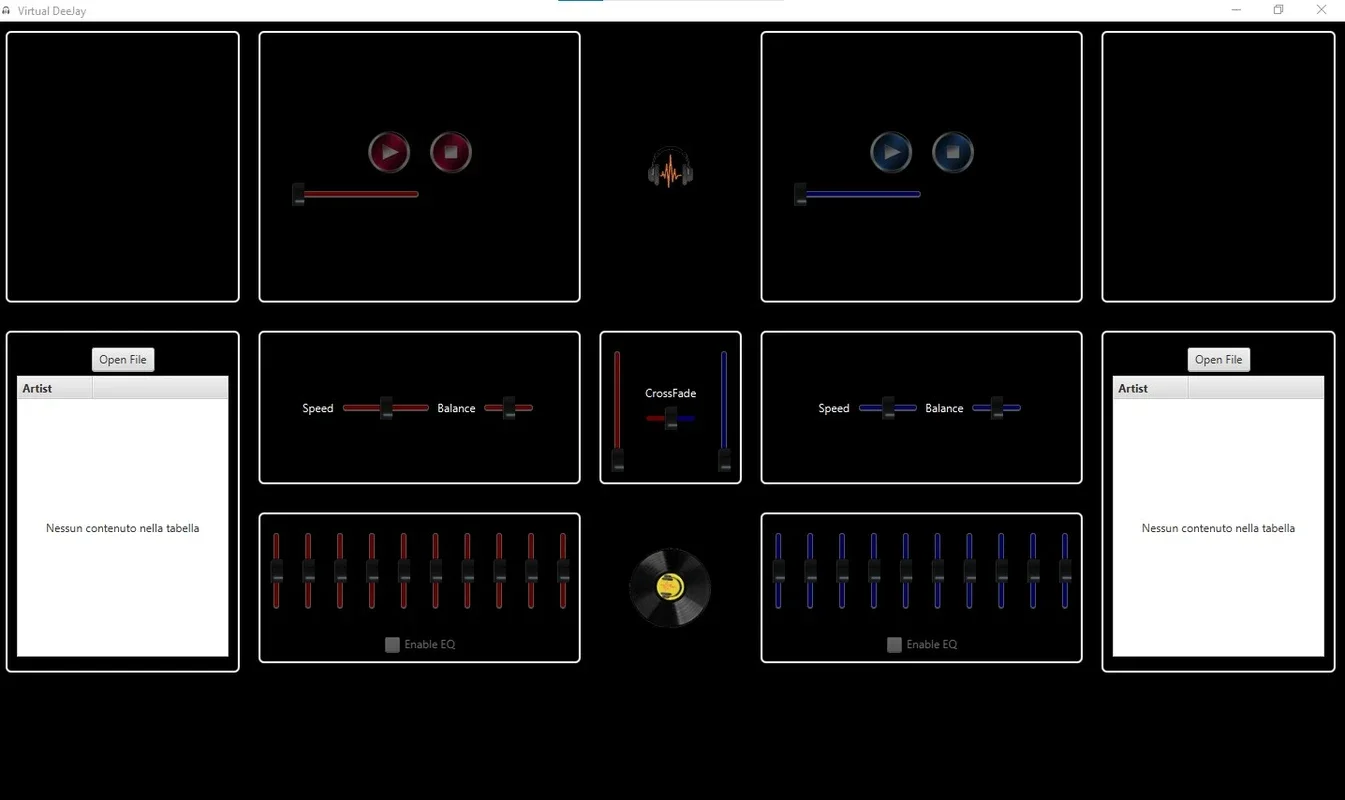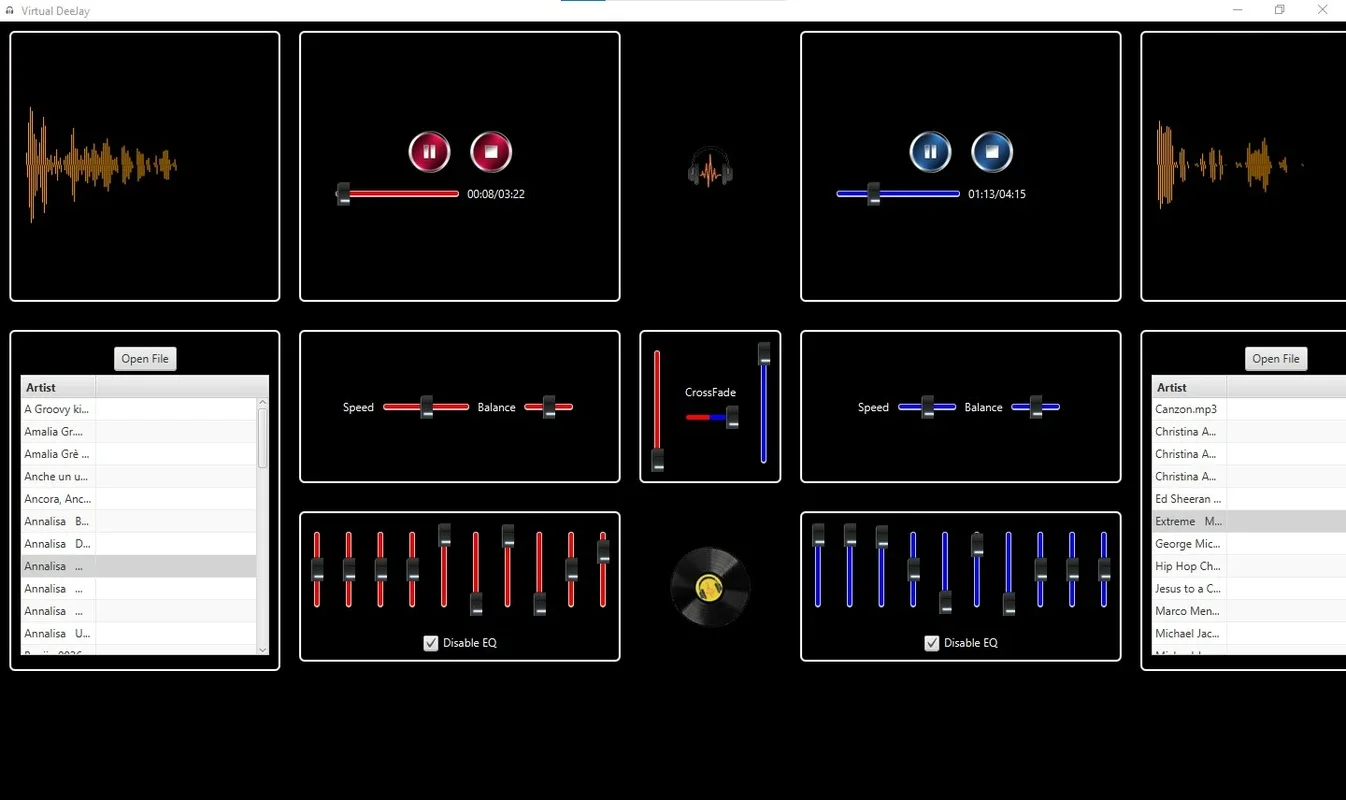Virtual-DeeJay App Introduction
Virtual-DeeJay is a virtual DJ application built using JavaFX, offering users a streamlined and intuitive platform for mixing and manipulating audio tracks. This application provides a user-friendly interface, enabling both novice and experienced users to create and perform DJ sets with ease. Unlike many professional DJ software packages, Virtual-DeeJay offers a lightweight and accessible alternative, ideal for personal use or smaller-scale events.
Key Features and Functionality
Virtual-DeeJay boasts a range of features designed to enhance the user experience and facilitate creative audio mixing. These include:
- Intuitive Interface: The application's user interface is designed for ease of use, with clearly labeled controls and a logical layout. Users can quickly learn to navigate the application and access its various features.
- Track Loading and Management: Virtual-DeeJay allows users to easily load and manage multiple audio tracks simultaneously. Users can browse their music library, select tracks, and arrange them in a playlist for seamless transitions.
- Mixing and Blending: The application provides tools for mixing and blending audio tracks, allowing users to create smooth transitions between songs. Features such as crossfading and EQ adjustments enable users to fine-tune the audio output.
- Effects and Filters: Virtual-DeeJay incorporates a variety of audio effects and filters, allowing users to add creative flair to their mixes. These effects can be applied individually or in combination to achieve unique sonic landscapes.
- Looping and Cue Points: Users can set loop points and cue points within tracks, enabling them to create dynamic and engaging mixes. This feature is particularly useful for creating extended mixes or incorporating specific sections of songs.
- Beat Matching: While not an automatic feature, Virtual-DeeJay provides visual cues to help users manually match the beats of different tracks, ensuring smooth transitions and a consistent rhythm.
- Headphone Monitoring: Virtual-DeeJay supports headphone monitoring, allowing DJs to preview upcoming tracks and adjust their mixes before sending the audio to the main speakers. This is a crucial feature for professional-quality mixing.
Technical Aspects and Limitations
Virtual-DeeJay is built using JavaFX, a cross-platform framework, which offers portability across different operating systems. However, this also presents some limitations. The application's performance may vary depending on the system's resources and the complexity of the audio files being processed. High-resolution audio files or a large number of simultaneously loaded tracks may impact performance.
One significant limitation, particularly on Windows, is the synchronization of headphone audio with speaker audio. While many professional DJ applications seamlessly handle this, Virtual-DeeJay requires the use of third-party software, such as Virtual Audio Cable, to achieve simultaneous audio output to both headphones and speakers. This adds an extra layer of complexity to the setup process.
Comparison with Other Virtual DJ Software
Compared to industry-standard DJ software like Traktor Pro or Serato DJ Pro, Virtual-DeeJay offers a more simplified and less feature-rich experience. Professional software packages often include advanced features such as automatic beat matching, sophisticated effects processing, and integration with hardware controllers. However, Virtual-DeeJay's simplicity makes it an excellent entry point for beginners or those seeking a lightweight alternative for personal use.
Virtual-DeeJay also differs from other free, open-source DJ software in its reliance on JavaFX. Many open-source alternatives utilize different frameworks or programming languages, resulting in varying performance characteristics and user interface designs. The choice between Virtual-DeeJay and other options depends on individual preferences and technical expertise.
Future Development and Potential Improvements
Future development of Virtual-DeeJay could focus on addressing some of its current limitations. Improvements could include:
- Improved Performance: Optimizing the application's code to improve performance, particularly when handling high-resolution audio files or a large number of tracks.
- Automatic Beat Matching: Implementing an automatic beat-matching algorithm to simplify the mixing process.
- Enhanced Effects Processing: Expanding the range of audio effects and filters available to users.
- Hardware Controller Support: Adding support for external hardware controllers to enhance the user experience.
- Native Windows Audio Synchronization: Developing a native solution for synchronizing headphone and speaker audio on Windows, eliminating the need for third-party software.
Conclusion
Virtual-DeeJay provides a user-friendly and accessible platform for mixing and manipulating audio tracks. While it lacks some of the advanced features of professional DJ software, its simplicity and ease of use make it an attractive option for beginners and those seeking a lightweight alternative. With ongoing development and improvements, Virtual-DeeJay has the potential to become an even more powerful and versatile virtual DJ application.


